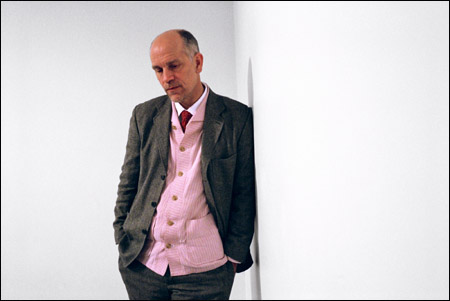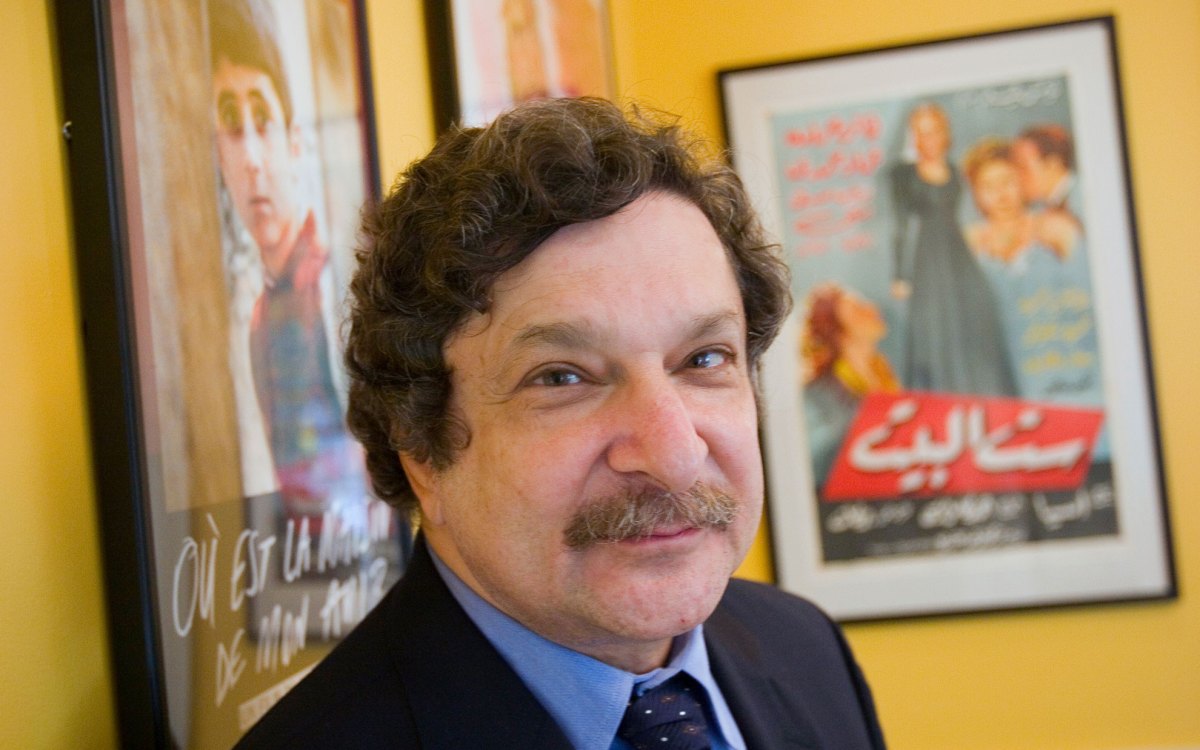John Malkovich: The director upstairs:
Actor attends directorial debut at HFA

You might expect John Malkovich to feel a sense of triumph at having finally brought “The Dancer Upstairs” to the screen. After all, it took eight years to get the film made, much of that time occupied with finding financial backing.
But Malkovich, who was here last Friday (Feb. 28) to present the movie (his first as a director) at the Harvard Film Archive, isn’t patting himself on the back for having pushed the project through to completion.
“I’m not very triumphalist,” the actor said in his soft, Midwestern drawl (he was born in southern Illinois). “It’s just not my worldview. I’m glad we got to do it, and I feel the results justify all the sacrifice that people put into it. But I don’t think you can do things to prove anything to anyone, even to yourself. In the case of directing a film, you do it because you want to. That’s the only justification.”
Malkovich’s equanimity is all the more surprising considering that this is the fourth film project that he was scheduled to direct. For a variety of reasons, the first three never made it out of the pre-production stage
“The Dancer Upstairs,” from a novel by British writer Nicholas Shakespeare (who also wrote the screenplay), tells of the efforts of a police detective in an unnamed South American country to track down the leader of a guerrilla movement that threatens the stability of the government. The story is based on the hunt for the actual Peruvian guerrilla leader Abimael Guzman, head of the Maoist group Shining Path.
Malkovich said he never lost enthusiasm for the project, except for one brief period after the original funding agreement fell apart just before the movie was due to begin shooting. He attributes his determination at least partly to the support of the screenwriter and the international cast, one of whom, the Italian actress Laura Morante, who plays the dancer of the title, accompanied Malkovich to Friday night’s screening.
“The fact that the actors really liked it and really wanted to do it was a huge thing for me, because it wasn’t an easy film to put together. It’s a story that takes place in South America, and it’s with actors who don’t speak English as their native tongue. And because of the subject matter, it was always going to be complicated.”
Malkovich, known for his compelling performances in such films as “Places in the Heart,” “Dangerous Liaisons,” “Of Mice and Men,” “In the Line of Fire,” and the offbeat Spike Jonze comedy “Being John Malkovich,” began his acting career as one of the founding members of Chicago’s Steppenwolf Theatre Company.
Known for its collaborative, ensemble approach, Steppenwolf seems to have left its mark on Malkovich the director. In most cases, he prefers to stand back and let his actors find their own way into their roles, a method he believes helps them bring more imagination and creativity to the project.
“I often feel that if I say, ‘OK, we’ll do this and go over here and do it like this,’ I don’t really get to see what they create, what they bring to the table, what toys are in their suitcase.”
Malkovich recalled an incident in the making of the movie in which Morante expressed her feeling that a certain line was not right for her character. Malkovich never insisted that she do the line as written, but he did explain why he thought it was necessary. Their discussion of this point, he believed, made the scene stronger.
“If I say, ‘Just shut up and do it like this,’ then I’m not using her. There’s no need for her to be there. She can be anybody.”
Malkovich said that as a young director of theatrical productions, he did not always adhere to the collaborative principle, but as he grew older he began to embrace it more and more.
“When I was younger, my vision was much more singular, or we could just call it fascist. But I outgrew that. I try to put people in a room and let them work together. I watch, and I reflect, and, if need be, I guide what happens. But I don’t want to dictate – because I don’t like to be dictated to.”
Malkovich said that a director can always resort to telling the actors, “‘It’s my film – do what I want.’ But I don’t want to do that, because it’s not my film. It’s our film, and, yes, you have to do your best to ensure that there is a point of view and that that point of view is not damaged in the collaborative process. But, boy, in my experience, the biggest damage comes when it’s not collaborative, when an actor can’t tell you, ‘I don’t want to say this, I don’t feel comfortable with this, I don’t like the way this is going.’ You have to listen to that, I think, whether you agree or not.”
Rather than instructing his actors how they should read their lines or interpret their characters, Malkovich said he concerns himself more with the visual aspects of the film.
“I’m extremely particular about how the actors are looked at, what’s the point of view.”
In order to achieve control over the film’s visual perspective, Malkovich has educated himself about the technical aspects of filmmaking, and often functions as his own cameraman.
“I can’t imagine making a film without looking through the camera a huge part of the time or operating it myself a decent amount of the time.”
Although “The Dancer Upstairs” represents Malkovich’s directorial debut, directing films is something he has been preparing for throughout his long career as an actor.
“I learned a lot of the technical elements of moviemaking from directors and also from technicians. I never hung out with other actors talking about characters. I hung out with cameramen or technicians because I wanted to learn something I didn’t know anything about.”




